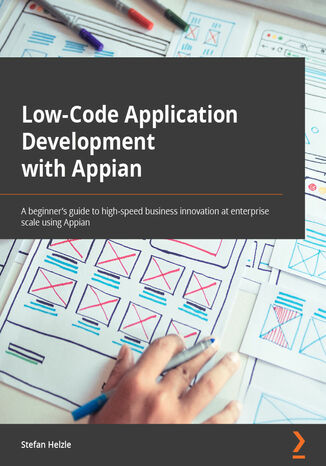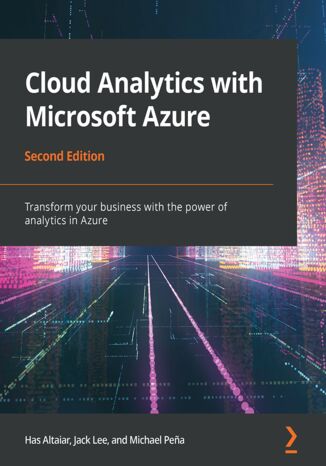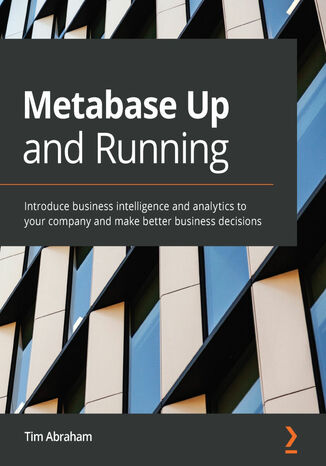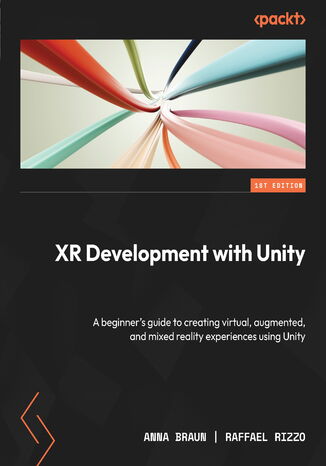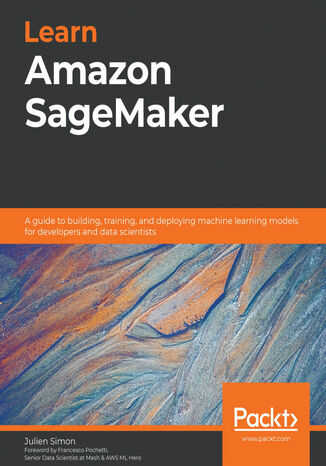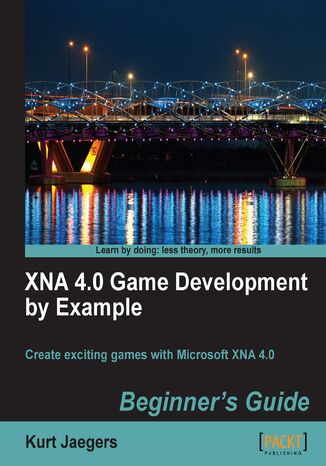Categories
-
- Bitcoin
- Businesswoman
- Coaching
- Controlling
- E-business
- Economy
- Finances
- Stocks and investments
- Personal competence
- Computer in the office
- Communication and negotiation
- Small company
- Marketing
- Motivation
- Multimedia trainings
- Real estate
- Persuasion and NLP
- Taxes
- Social policy
- Guides
- Presentations
- Leadership
- Public Relation
- Reports, analyses
- Secret
- Social Media
- Sales
- Start-up
- Your career
- Management
- Project management
- Human Resources
-
- Architektura i wnętrza
- Health and Safety
- Biznes i Ekonomia
- Home and garden
- E-business
- Ekonomia i finanse
- Esoterecism
- Finances
- Personal finance
- Business
- Photography
- Computer science
- HR & Payroll
- For women
- Computers, Excel
- Accounts
- Culture and literature
- Scientific and academic
- Environmental protection
- Opinion-forming
- Education
- Taxes
- Travelling
- Psychology
- Religion
- Agriculture
- Book and press market
- Transport and Spedition
- Healthand beauty
-
- Office applications
- Data bases
- Bioinformatics
- IT business
- CAD/CAM
- Digital Lifestyle
- DTP
- Electronics
- Digital photography
- Computer graphics
- Games
- Hacking
- Hardware
- IT w ekonomii
- Scientific software package
- School textbooks
- Computer basics
- Programming
- Mobile programming
- Internet servers
- Computer networks
- Start-up
- Operational systems
- Artificial intelligence
- Technology for children
- Webmastering
-
- Antology
- Ballade
- Biographies and autobiographies
- For adults
- Dramas
- Diaries, memoirs, letters
- Epic, epopee
- Essay
- Fantasy and science fiction
- Feuilletons
- Work of fiction
- Humour and satire
- Other
- Classical
- Crime fiction
- Non-fiction
- Fiction
- Mity i legendy
- Nobelists
- Novellas
- Moral
- Okultyzm i magia
- Short stories
- Memoirs
- Travelling
- Narrative poetry
- Poetry
- Politics
- Popular science
- Novel
- Historical novel
- Prose
- Adventure
- Journalism, publicism
- Reportage novels
- Romans i literatura obyczajowa
- Sensational
- Thriller, Horror
- Interviews and memoirs
-
- Archeology
- Bibliotekoznawstwo
- Cinema studies
- Philology
- Polish philology
- Philosophy
- Finanse i bankowość
- Geography
- Economy
- Trade. World economy
- History and archeology
- History of art and architecture
- Cultural studies
- Linguistics
- Literary studies
- Logistics
- Maths
- Medicine
- Humanities
- Pedagogy
- Educational aids
- Popular science
- Other
- Psychology
- Sociology
- Theatre studies
- Theology
- Economic theories and teachings
- Transport i spedycja
- Physical education
- Zarządzanie i marketing
-
- Health and Safety
- History
- Road Code. Driving license
- Law studies
- Healthcare
- General. Compendium of knowledge
- Academic textbooks
- Other
- Construction and local law
- Civil law
- Financial law
- Economic law
- Economic and trade law
- Criminal law
- Criminal law. Criminal offenses. Criminology
- International law
- International law
- Health care law
- Educational law
- Tax law
- Labor and social security law
- Public, constitutional and administrative law
- Family and Guardianship Code
- agricultural law
- Social law, labour law
- European Union law
- Industry
- Agricultural and environmental
- Dictionaries and encyclopedia
- Public procurement
- Management
-
- Africa
- Albums
- Southern America
- North and Central America
- Australia, New Zealand, Oceania
- Austria
- Asia
- Balkans
- Middle East
- Bulgary
- China
- Croatia
- The Czech Republic
- Denmark
- Egipt
- Estonia
- Europe
- France
- Mountains
- Greece
- Spain
- Holand
- Iceland
- Lithuania
- Latvia
- Mapy, Plany miast, Atlasy
- Mini travel guides
- Germany
- Norway
- Active travelling
- Poland
- Portugal
- Other
- Przewodniki po hotelach i restauracjach
- Russia
- Romania
- Slovakia
- Slovenia
- Switzerland
- Sweden
- World
- Turkey
- Ukraine
- Hungary
- Great Britain
- Italy
-
- Philosophy of life
- Kompetencje psychospołeczne
- Interpersonal communication
- Mindfulness
- General
- Persuasion and NLP
- Academic psychology
- Psychology of soul and mind
- Work psychology
- Relacje i związki
- Parenting and children psychology
- Problem solving
- Intellectual growth
- Secret
- Sexapeal
- Seduction
- Appearance and image
- Philosophy of life
-
- Bitcoin
- Businesswoman
- Coaching
- Controlling
- E-business
- Economy
- Finances
- Stocks and investments
- Personal competence
- Communication and negotiation
- Small company
- Marketing
- Motivation
- Real estate
- Persuasion and NLP
- Taxes
- Social policy
- Guides
- Presentations
- Leadership
- Public Relation
- Secret
- Social Media
- Sales
- Start-up
- Your career
- Management
- Project management
- Human Resources
-
- Antology
- Ballade
- Biographies and autobiographies
- For adults
- Dramas
- Diaries, memoirs, letters
- Epic, epopee
- Essay
- Fantasy and science fiction
- Feuilletons
- Work of fiction
- Humour and satire
- Other
- Classical
- Crime fiction
- Non-fiction
- Fiction
- Mity i legendy
- Nobelists
- Novellas
- Moral
- Okultyzm i magia
- Short stories
- Memoirs
- Travelling
- Poetry
- Politics
- Popular science
- Novel
- Historical novel
- Prose
- Adventure
- Journalism, publicism
- Reportage novels
- Romans i literatura obyczajowa
- Sensational
- Thriller, Horror
- Interviews and memoirs
-
- Philosophy of life
- Interpersonal communication
- Mindfulness
- General
- Persuasion and NLP
- Academic psychology
- Psychology of soul and mind
- Work psychology
- Relacje i związki
- Parenting and children psychology
- Problem solving
- Intellectual growth
- Secret
- Sexapeal
- Seduction
- Appearance and image
- Philosophy of life
This book is an exhaustive overview of how the Appian Low-Code BPM Suite enables tech-savvy professionals to rapidly automate business processes across their organization, integrating people, software bots, and data. This is crucial as 80% of all software development is expected to be carried out in low code by 2024.This practical guide helps you master business application development with Appian as a beginner low-code developer. You'll learn to automate business processes using Appian low-code, records, processes, and expressions quickly and on an enterprise scale. In a fictional development project, guided by step-by-step explanations of the concepts and practical examples, this book will empower you to transform complex business processes into software.At first, you’ll learn the power of no-code with Appian Quick Apps to solve some of your most crucial business challenges. You’ll then get to grips with the building blocks of an Appian, starting with no-code and advancing to low-code, eventually transforming complex business requirements into a working enterprise-ready application.By the end of this book, you'll be able to deploy Appian Quick Apps in minutes and successfully transform a complex business process into low-code process models, data, and UIs to deploy full-featured, enterprise-ready, process-driven, mobile-enabled apps.
Has Altaiar, Jack Lee, Michael Pena
Cloud Analytics with Microsoft Azure serves as a comprehensive guide for big data analysis and processing using a range of Microsoft Azure features. This book covers everything you need to build your own data warehouse and learn numerous techniques to gain useful insights by analyzing big data.The book begins by introducing you to the power of data with big data analytics, the Internet of Things (IoT), machine learning, artificial intelligence, and DataOps. You will learn about cloud-scale analytics and the services Microsoft Azure offers to empower businesses to discover insights. You will also be introduced to the new features and functionalities added to the modern data warehouse.Finally, you will look at two real-world business use cases to demonstrate high-level solutions using Microsoft Azure. The aim of these use cases will be to illustrate how real-time data can be analyzed in Azure to derive meaningful insights and make business decisions. You will learn to build an end-to-end analytics pipeline on the cloud with machine learning and deep learning concepts.By the end of this book, you will be proficient in analyzing large amounts of data with Azure and using it effectively to benefit your organization.
Metabase is an open source business intelligence tool that helps you use data to answer questions about your business. This book will give you a detailed introduction to using Metabase in your organization to get the most value from your data.You’ll start by installing and setting up Metabase on your local computer. You’ll then progress to handling the administration aspect of Metabase by learning how to configure and deploy Metabase, manage accounts, and execute administrative tasks such as adding users and creating permissions and metadata. Complete with examples and detailed instructions, this book shows you how to create different visualizations, charts, and dashboards to gain insights from your data. As you advance, you’ll learn how to share the results with peers in your organization and cover production-related aspects such as embedding Metabase and auditing performance. Throughout the book, you’ll explore the entire data analytics process—from connecting your data sources, visualizing data, and creating dashboards through to daily reporting.By the end of this book, you’ll be ready to implement Metabase as an integral tool in your organization.
The drastic surge in the demand for XR development has led to an imminent need for comprehensive resources, learning material, and overall know-how in this area. This one-stop resource will ensure that professionals venturing into XR development can access all XR-related techniques to build appealing XR applications, without relying on Google every step of the way.This book is your guide to developing XR applications with Unity 2021.3 or later versions, helping you to create VR, AR, and MR experiences of increasing complexity. The chapters cover the entire XR application development process from setting up an interactive XR scene using the XR Interaction Toolkit or AR Foundation, adding physics, animations, continuous movement, teleportation, sound effects, and visual effects, to testing and deploying to VR headsets, simulators, smartphones, and tablets. Additionally, this XR book takes you on a journey from the basics of Unity and C# to advanced techniques such as building multiplayer applications and incorporating hand- and gaze-tracking capabilities.By the end of this book, you'll be fully equipped to create cutting-edge XR projects for engaging individual, academic, and industrial use cases that captivate your audience.
Julien Simon, Francesco Pochetti
Amazon SageMaker enables you to quickly build, train, and deploy machine learning (ML) models at scale, without managing any infrastructure. It helps you focus on the ML problem at hand and deploy high-quality models by removing the heavy lifting typically involved in each step of the ML process. This book is a comprehensive guide for data scientists and ML developers who want to learn the ins and outs of Amazon SageMaker.You’ll understand how to use various modules of SageMaker as a single toolset to solve the challenges faced in ML. As you progress, you’ll cover features such as AutoML, built-in algorithms and frameworks, and the option for writing your own code and algorithms to build ML models. Later, the book will show you how to integrate Amazon SageMaker with popular deep learning libraries such as TensorFlow and PyTorch to increase the capabilities of existing models. You’ll also learn to get the models to production faster with minimum effort and at a lower cost. Finally, you’ll explore how to use Amazon SageMaker Debugger to analyze, detect, and highlight problems to understand the current model state and improve model accuracy.By the end of this Amazon book, you’ll be able to use Amazon SageMaker on the full spectrum of ML workflows, from experimentation, training, and monitoring to scaling, deployment, and automation.
The Tableau Certified Data Analyst certification validates the essential skills needed to explore, analyze, and present data, propelling your career in data analytics. Whether you're a seasoned Tableau user or just starting out, this comprehensive resource is your roadmap to mastering Tableau and achieving certification success.The book begins by exploring the fundamentals of data analysis, from connecting to various data sources to transforming and cleaning data for meaningful insights. With practical exercises and realistic mock exams, you'll gain hands-on experience that reinforces your understanding of Tableau concepts and prepares you for the challenges of the certification exam.As you progress, expert guidance and clear explanations make it easy to navigate complex topics as each chapter builds upon the last, providing a seamless learning experience—from creating impactful visualizations to managing content on Tableau Cloud.Written by a team of experts, this Tableau book not only helps you pass the certification exam but also equips you with the skills and confidence needed to excel in your career. It is an indispensable resource for unlocking the full potential of Tableau.
The iPhone is the most popular smartphone available on the market, renowned for its sophisticated design, immersive UI, and user safety. And even if you’ve bought an iPhone for its impressive specifications, you may still be unaware of many of its features, which you’ll discover with the help of this book!The iPhone Manual is your practical guide to uncovering the hidden potential of iPhones, and will leave you amazed at how productive you can be by learning tips and hacks for customizing your device as a communication, entertainment, and work tool. You’ll unearth the complete range of iPhone features and customize it to streamline your day-to-day interaction with your device. This iPhone manual will help you explore your iPhone’s impressive capabilities and fully understand all the features, functions, and settings that every iPhone owner should know. With this book, you’ll get to grips with not only the basics of communication but also best practices for accessing photos, videos, and music to set up your entertainment using your iPhone. In addition to this, you’ll learn about serious work tools that will make you productive in your everyday tasks.By the end of this iPhone book, you’ll have learned how to use your iPhone to perform tasks and customize your experience in ways you probably didn’t realize were possible.
XNA Game Studio enables hobbyists and independent game developers to easily create video games. It gives you the power to bring your creations to life on Windows, the Xbox 360, the Zune, and the Windows Phone platforms. But before you give life to your creativity with XNA, you need to gain a solid understanding of some game development concepts.This book covers both the concepts and the implementations necessary to get you started on bringing your own creations to life with XNA. It details the creation of four games, all in different styles, from start to finish using the Microsoft XNA Framework, including a puzzler, space shooter, multi-axis shoot-'em-up, and a jump-and-run platform game. Each game introduces new concepts and techniques to build a solid foundation for your own ideas and creativity. Beginning with the basics of drawing images to the screen, the book then incrementally introduces sprite animation, particles, sound effects, tile-based maps, and path finding. It then explores combining XNA with Windows Forms to build an interactive map editor, and builds a platform-style game using the editor-generated maps. Finally, the book covers the considerations necessary for deploying your games to the Xbox 360 platform.By the end of the book, you will have a solid foundation of game development concepts and techniques as well as working sample games to extend and innovate upon. You will have the knowledge necessary to create games that you can complete without an army of fellow game developers at your back.

